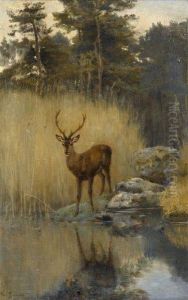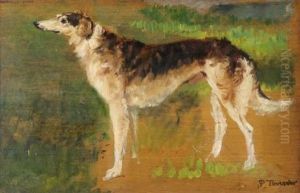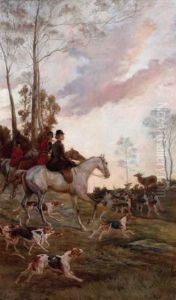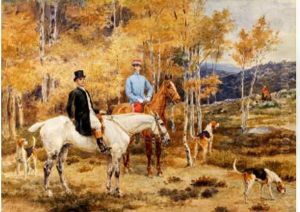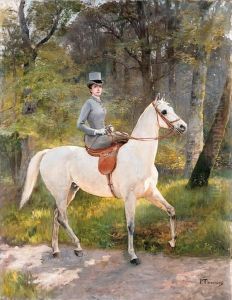Paul Tavernier Paintings
Paul Tavernier was a French painter born on April 21, 1852, in Poitiers, France. He was known for his landscapes, historical scenes, and military subjects. Tavernier was a pupil of the École des Beaux-Arts in Paris, where he studied under renowned artists like Alexandre Cabanel and Émile Bin. His classical training provided him with a solid foundation in the techniques of painting, which he would later apply to his own distinctive style.
Tavernier's work was influenced by the Barbizon school, a group of artists known for their realistic and naturalistic depictions of the French countryside. He admired the works of Jean-Baptiste-Camille Corot and Charles-François Daubigny, both of whom were associated with the Barbizon movement. Tavernier's landscapes often featured rural scenes, forests, and the play of light and shadow, capturing the mood and atmosphere of the locations he painted.
During his career, Tavernier exhibited at the Paris Salon, an official art exhibition of the Académie des Beaux-Arts in Paris. It was the most prestigious art event in the world at the time, and Tavernier's participation helped to establish his reputation as a skilled painter. His work received recognition and was awarded several medals at these exhibitions.
In addition to landscapes, Tavernier also painted a number of works depicting military subjects, particularly scenes from the Franco-Prussian War. These paintings often conveyed the drama and tragedy of war, reflecting the impact that the conflict had on French society and the psyche of its people.
Paul Tavernier's contribution to French art was recognized during his lifetime, and his works can be found in various museums and private collections. He continued to paint until his later years, passing away on October 28, 1943, in Barbizon, France. Tavernier's legacy is that of a dedicated artist who captured the essence of the French landscape and the spirit of his times through his masterful brushwork and attention to detail.


